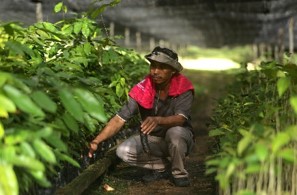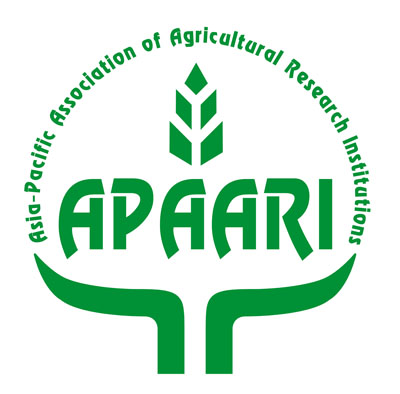 Theme 1: Mobilization, management and use of natural resources for sustainability of agri- food systems
Theme 1: Mobilization, management and use of natural resources for sustainability of agri- food systems
In the Asia-Pacific region, access to natural resources, such as fertile land, water and energy is becoming progressively difficult. Increased demand for food, driven by population growth, rising incomes and urbanization has further exacerbated this pressure. Production inefficiencies and waste further add to the problem. The region now uses three times more natural resources per unit of gross domestic product (GDP) than the global average. Land degradation and water scarcity are worsening. This context gives rise to the need to effectively manage and use land, water and energy resources for sustainable production, productivity and environmental protection. This requires the following key development outcomes:
- Land and water resources are managed and used effectively for sustainable productivity and environmental protection.
- Forests, agroforestry and trees are utilized and integrated for the transformation and development of agri-food systems.
- Agrobiodiversity is effectively managed and utilized for increased agricultural productivity, efficiency and sustainability.
- Biotechnologies and related regulatory systems are promoted and applied for improved productivity, nutritional quality, and sustainability of agri-food systems.
- Systems of sustainable generation and use of energy, including bioenergy and biomass are designed and adapted to local conditions
Theme 2: Management of risks and uncertainties in the agri-food system
Risk and uncertainty are quintessential features of agriculture. Risk in agri-food systems emerges when alternative outcomes or conditions with probabilities exist. Primary sources include production risk, price risk, market rise, as well as financial, institutional and environmental risk. Specific examples include weather, price fluctuations and change in government policy. The Asia-Pacific region is particularly vulnerable to natural disasters, creating greater risk in agriculture. This context gives rise to the need to develop policies and strategies for managing and coping with risks and uncertainties in the agriculture sector. This requires the following key development outcomes:
- Policies and strategies for managing (minimizing) price and market risks in agriculture and agri-food systems are developed and adapted.
- Tools for coping with uncertainties arising from the effects of climate change, sea level rise, natural disasters and man-made catastrophes are developed and improved.
- Systematic processes of and partnerships in biosecurity at borders and on farms in preventing and managing the spread of transboundary pests and disease are developed.
Theme 3: Inclusive development and integration of value chains targeted at benefiting smallholders
Economic growth, urbanization, globalization, reduction of state intervention and import barriers have contributed to expanding domestic and international markets for agricultural commodities in the Asia-Pacific region. Changes in food preference towards high value and processed products present new opportunities for smallholders and have created more complex agricultural supply chains. However, in most of the region, smallholder producers have poor access to output markets and are therefore excluded from reaping the economic benefits of these new chains. Inputs and services are often unavailable or unaffordable to smallholders. Important to value chains is the loss of primary produce along the chain, both during and after harvest that continues to restrict the economic benefits that can be gained from agricultural production. Lastly, in many areas youth are disengaged with agriculture. This context gives rise to two needs; to integrate smallholder producers into value chains, and to minimize loss during harvest and post-harvest value chain processes. This requires the following key development outcomes:
- Small producers, rural communities and women are integrated with other value chain actors so they contribute and receive the benefits of integrated markets
- Innovative best practices for reduced harvest and postharvest loss and wastage are applied and integrated
- Smallholder agriculture is integrated into manufacturing and service sectors, especially agro-industries, agri-business and agri-services to ensure employment for rural communities
Theme 4: Analysis, strengthening and formulation of public policy and overarching regulatory frameworks to support the transformation and development of agri-food systems
Efficient systems of pricing, financing, taxation, services, resource management and marketing are an integral part of transforming agri-food systems for sustainable agricultural growth and development. These systems need to be supported by evidence-based policies and strategies that consider national circumstances with a view to create a comparative advantage at a national level and overall growth and sustainable development at a regional level. This context gives rise to the need to design and implement policies and strategies to boost efficient agricultural growth and development. This requires the following key development outcomes:
- Research pertaining to policy, socioeconomics and markets is supported to assist with developing and implementing policies and strategies to increase agricultural growth and development
- Policies and strategies for accessing and mobilization of land and water resources by smallholder producers and landless rural communities are developed and adopted
